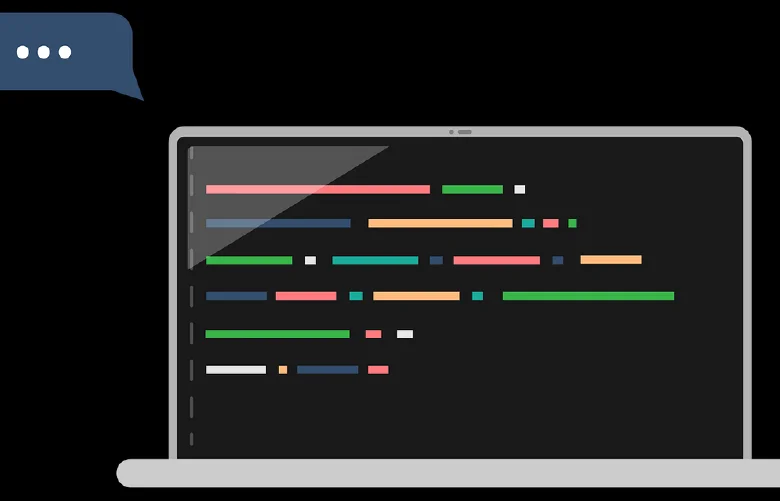One of the main challenges in data analytics is handling enormous amounts of data. When undertaking research on a specific group, it would be impossible and unnecessary to check and investigate the entire population.
So how to solve this issue? Is it possible to select a portion of the data to serve as a representative sample of the complete dataset? It appears that there is. Without looking at the complete dataset, you can research using various sampling techniques used in data analytics.
However, you must first understand sampling methods and how it functions before moving on to different sample approaches in data analytics.
What is Sampling?
Sampling is a process that involves choosing specific individuals or a small portion of the population to draw statistical conclusions from them and gauge the attributes of the entire population.
Researchers frequently utilize various sampling techniques in market analysis, so they won’t have to study the full community to gather useful information. It is also a time- and money-efficient method, serving as the cornerstone of every research design. Research survey software can deploy sampling strategies for the best derivation.
Consider a medicine company that wants to study the population’s exposure to a drug’s negative side effects. Then, conducting research that includes everyone is all but impossible. In this instance, the researcher chooses a sample of individuals from every target audience/demographic and then conducts a study on them, providing indicative input on the behavior of the medicine. Now that we have understood what is sampling, let us discuss the different types of sampling methods along with illustrative examples here in detail. Learn more about data collection tools.

Get curriculum highlights, career paths, industry insights and accelerate your data science journey.
Download brochure
Types of Sampling Techniques
There are different types of sampling techniques available. Let’s now talk about the various types of sampling techniques used in data analytics.
- Probability Sampling Techniques
- Non Probability Sampling Techniques
Probability Sampling Techniques
It is among the most significant sampling techniques. By using probability sampling, the chance of getting selected increases for a variety of populations.
Non-Probability Sampling Techniques
Non-probability sampling method limits the possibility that each person will be selected for the sample. Although easier and less expensive, this type of sampling technique carries a significant risk of bias.
Want to learn everything about the data visualization tools that can help you implement any of these types of sampling techniques? Check this in-depth article on data visualization tools!
Types of Probability Sampling
Let’s look at the types of probability sampling techniques
Simple Random Sampling
In this type of sampling technique, the researchers select or choose participants randomly until there is a sufficiently big sample size to make generalizations about the population.
Cluster sampling
This sampling methods uses smaller subgroups that are intended to represent the population as a whole more accurately.
Systematic sampling
The initial item is the only one that is randomly chosen in systematic sampling method, also known as systematic clustering. Although there is a degree of randomization, the researcher can control the frequency of the selections, preventing inadvertent grouping.
Stratified random sampling
Stratified sampling method involves the use of random selection within predetermined groupings. Knowing information about the target population helps researchers subdivide or stratify it in a manner that makes logical sense.
Types of Non-Probability Sampling
Let’s look at the types of non-probability sampling techniques
Convenience Sampling
Here, the research study’s creators conduct interviews with nearby participants or respondents. Although this sampling method can lead to skewed results, it is a frequent tactic for companies looking for fast input.
Judgmental or Purposive Sampling
Using judgment, a researcher chooses a population subset to participate in the study. This sampling method is known as judgment (or deliberate) sampling. There is a common misconception among researchers that they may utilize sound judgment to compile a representative sample and may even save money and time.
Snowball Sampling
When tracing the subjects becomes challenging, researchers use the snowball sampling technique. For instance, surveying homeless people or unauthorized immigrants will be very difficult. In these situations, researchers can follow a few classifications to interview and gather data utilizing the snowball hypothesis.
Quota Sampling
This sampling method specifies which criteria or groups must be used to determine who needs to be recruited for a survey to achieve a spread over the target population.
Difference Between Probability Sampling And Non-Probability Sampling Techniques

Now that you know about the different sampling method types along with their subtypes, let’s learn about their differences. Here is a table that encapsulates the entire discussion and represents them in a tabular format.
| Basis |
Probability sampling techniques |
Non-Probability sampling techniques |
| Definition |
This is a sampling technique where a method based on the probability theory is used to choose samples from a large, wider population. |
This is a sampling procedure where researchers – instead of doing random selection – choose samples depending on their subjective judgment. |
| Other Name |
Random Sampling Method |
Non-Random Sampling Method |
| Nature |
Conclusive |
Exploratory |
| Population Choice |
Random Selection |
Arbitrary Selection |
| Sample |
Conclusive representation of the population demographics as there is a technique for determining the sample. |
Mostly skewed representation of the population demographics as the sampling method is arbitrary. |
| Time |
It is time-consuming as before the onset of the market research study, the research design outlines the selection parameters. |
It is a quick sampling method because both the sample and its selection criteria are defined. |
| Outcomes |
This sampling type is completely unbiased. Thus, the outcomes are all conclusive. |
This sampling type is completely biased. Thus, the outcomes are biased, too. It renders the research work. |
| Hypothesis |
It involves an underlying hypothesis right before the onset of any research study |
It involves deriving the hypothesis after performing a research study. |
Advantages & Disadvantages of Sampling Techniques
The advantages of the different types of sampling techniques include the following:
- Low and affordable cost of sampling,
- High accuracy of data,
- Range of exhaustive and intensive data,
- Excellent rapport,
- Less time-consuming,
- High scope of sampling,
- Minimal or no organizational problems
The disadvantages of different types of sampling techniques include the following:
- Sampling impossibility
- Sampling units changeability
- Subject-specific knowledge requirement
- Change of bias
Conclusion
In this comprehensive guide, you have learned about sampling techniques, its types and both non-probability and probability sampling approaches in-depth. Choosing the appropriate sampling method becomes crucial before starting any form of research.
The sample you select will have a significant impact on the success of your study. There are many more sampling techniques to choose from to hone your research; these are simply the top ones. You must be completely certain of the sampling techniques you should employ when aiming to become a data analyst. Learn more about data collection methods.
HeroVired’s Integrated Program In Data Science, Artificial Intelligence, And Machine Learning is the best choice if you’re interested in learning and exploring data analytics. The course is structured like a boot camp with real-world projects and business case studies. Start taking this course right away to launch a lucrative career in data analytics.
FAQs
Sampling is a method for choosing certain individuals or a small portion of the population to draw conclusions (in-depth) about the population as a whole and estimate its characteristics.
Every individual in this population has the opportunity to get selected when there is probability sampling. Mostly quantitative research uses this method of sampling. These techniques are the best option if you wish to generate findings that include the entire population.
The five most common types of sampling techniques are:
- Systematic sampling
- Clustered sampling,
- Simple random sampling
- Stratified sampling
- Convenience sampling
- Snowball sampling
- Judgment sampling
- Quota sampling
Some limitations of sampling are as follows:
- Challenges in choosing a representative sample
- Sample unit changeability
- Changes of bias
- Sampling impossibility
- Need for subject-specific knowledge
You should pick a sampling technique depending on whether you intend to account for sampling bias or not. This is the exact reason why a random sampling method is preferred over a non-random method.
With the help of sampling, you can test a statistical hypothesis on the features of a population. Using samples, one can conclude populations. Since samples are useful, affordable, practical, and manageable, gathering data from them is simpler than ever.
Updated on September 2, 2024









